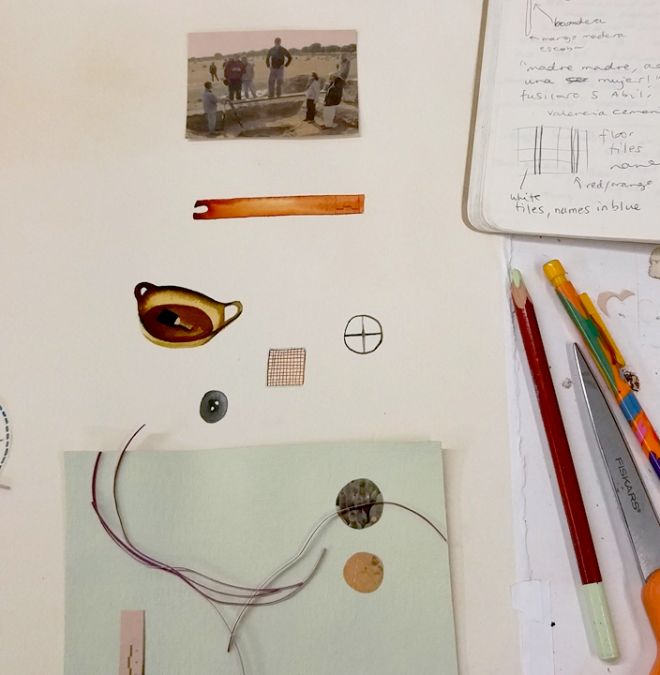
Memory is in Progress
March 5 - April 5 2016
Opening Saturday, March 5, 7-9pm
I walked where the mass graves had been uncovered and then re-covered. You could tell where the bodies had been dug up; the yellow dirt had a slight shift and change in color. That summer in Estepar they recovered the bones of 40 political prisoners that where shot by Franco’s Civil Guard as they were under the illusion that they being freed from prison. Near the onset of the Spanish Civil War, on September 29 and 30, 1936 the freed men were all taken to this field and shot. There are about 700 more bodies that were executed and dumped out here. My grandmother thinks Sotero her uncle is there.
At the local bar my uncle Pedro explains to me that the only reason they even began to dig there was for the construction of a train track. It was the sight of these bones mixed in with the dirt they were excavating that made the construction come to a fast halt. The bartender looked at us and gestured for us to be quiet. It was a depressing bar.
Some of the bones have been identified and some have not. There isn’t enough funding for the necessary scientific work and DNA testing. It’s important for people to identify the bones so they can have some closure. Back in the 80s the first exhumations consisted of village people getting together with shovels and walking to the fields where they knew mass graves existed, digging up skeletons, and each village taking a symbolic box of bones home for a long awaited burial.
Spain is second to Cambodia for the number of mass graves on its land, tells me Aitana Vargas, grand-daughter of Ascensión Mendieta who has been unable to retrieve her father’s body since he was shot in 1939. One day the civil guard came knocking at the door and that was it. Just last month and for the first time in Spain under the Law of Universal Jurisdiction and support from lawyers in Argentina, the body of Timoteo Mendieta was exhumed in Guadalajara. Currently, the bones of 21 people found in the same mass grave as Timoteo’s are in Argentina being identified. Some of the relatives of these missing persons are now gone, and they died without ever being able to know what happened to their family. My grandmother says Sotero has never found because at the time it was even prohibited to ask about the whereabouts of missing relatives and talk of events of the past.
-Patricia Fernández
The drawings, notes and images presented at LACA trace the various exhumation processes and Spain’s progress towards the acknowledgement of its past and the exercise of human rights. As news arrives during the month of March the notice board, which is part of the preview of this new work, will be added to. This body of work is a preview into the series of paintings Patricia Fernández has been working on from newspaper clippings, first hand testimonies, and in-the-field drawings of a landscape where history and memory is in progress.
